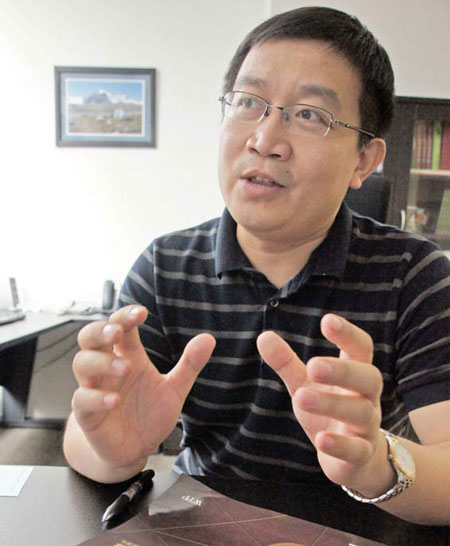Learning curve for consumers
Updated: 2012-08-13 17:12
By Andrew Moody (China Daily)
|
||||||||
|
 |
|
Peking Tan, research and development director of Millward Brown, says many Chinese consumers are not loyal to brands. [Photo/China Daily] |
Millward Brown executive develops market research models using state-of-the-art scientific techniques
Peking Tan says the Chinese are going through a phase where they are only just learning how to be consumers. The 34-year-old research and development director for global brands research company Millward Brown is one of the world's leading experts on the Chinese consumer.
"In China most consumers are learning how to be consumers and how to make the right decisions," he says. "It is like me. When I planned to buy my first car, I not only observed the car market but asked friends about their cars. I then felt I had a greater understanding. When I buy a car in future, the decision will be based much more on whether I like it. It is a process a lot of Chinese people are currently going through right now."
Tan was speaking in the company's expansive Beijing offices on the 7th floor of Xihuan Plaza that have a panoramic view of a city with more than 20 million consumers itself, more than many European countries and almost all US states.
Tan says Chinese consumers often think differently and are less selfish or individualistic than Western consumers.
"They don't live only for themselves. They live for their families and the future of their families. When they are making a purchase they will consider whether their wives or their children will like it also," he says. "They will also save for a time when they know they will have to spend money such as a child's wedding, even if that child is currently only 10."
One of the major talking points among Western multinationals in China is the creation of new markets as many towns in inner and western China develop - eventually creating the much-heralded market of a billion consumers that China watchers have been talking about for decades.
Tan believes the differences between tier one (major cities like Beijing and Shanghai), tier two (the provincial capitals, if not tier one) and even tier three (the remote cities) are often exaggerated.
"I think if you look at the consumption behavior of tier-two cities like Hangzhou and Changsha, you won't find many differences between them and Beijing and Shanghai and I think tier-three cities are also on a similar level now," he says. "The big gap is between the first three tiers and the tier four very rural small towns."
Tan says it would also be a mistake, however, to view people in tier-four cities as rural hicks with no spending power.
"People there often have more disposable money because the cost of living is not so high. I am from An-xiang in Hunan province and my little sister still lives there," he says. "Their life there is very good. They only work eight hours and after work they can afford to go to different restaurants and try various foods every day. She and her family also travel two or three times a year on holiday. So these consumers should not be ignored."
Tan himself left Hunan to study biology at Tsinghua University before doing a master's degree in psychology at the Chinese Academy of Sciences in Beijing.
He then decided to go into marketing, joining local company ACSR, which set up a joint venture with Millward Brown, part of the WPP advertising and media conglomerate, in 2006. His current role is involved in analyzing data and developing market research models using cognitive science and other state-of-the-art scientific techniques.
He is also involved in providing information for the company's famous Brandz surveys, which rank the value of brands globally. It also produces the Brandz Top50 of China's most valuable brands.

 Relief reaches isolated village
Relief reaches isolated village
 Rainfall poses new threats to quake-hit region
Rainfall poses new threats to quake-hit region
 Funerals begin for Boston bombing victims
Funerals begin for Boston bombing victims
 Quake takeaway from China's Air Force
Quake takeaway from China's Air Force
 Obama celebrates young inventors at science fair
Obama celebrates young inventors at science fair
 Earth Day marked around the world
Earth Day marked around the world
 Volunteer team helping students find sense of normalcy
Volunteer team helping students find sense of normalcy
 Ethnic groups quick to join rescue efforts
Ethnic groups quick to join rescue efforts
Most Viewed
Editor's Picks

|

|

|

|

|

|
Today's Top News
Health new priority for quake zone
Xi meets US top military officer
Japan's boats driven out of Diaoyu
China mulls online shopping legislation
Bird flu death toll rises to 22
Putin appoints new ambassador to China
Japanese ships blocked from Diaoyu Islands
Inspired by Guan, more Chinese pick up golf
US Weekly

|

|






